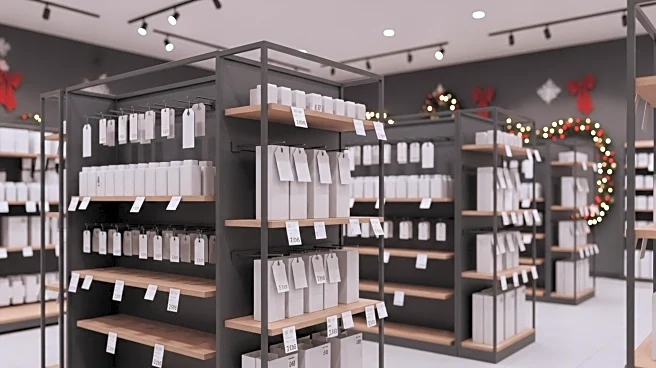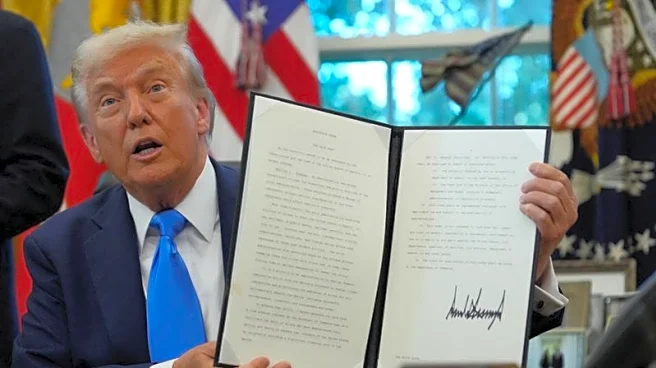What's Happening?
Retailers in the United States are grappling with the impact of tariffs as the holiday season approaches. Throughout 2025, many retailers have been forced to increase prices to offset the effects of tariffs, a move that has been described as a 'last resort' by Target CEO Brian Cornell. Major retailers like Walmart are striving to keep prices low for as long as possible, but the economic landscape is challenging. According to a report from Moody's Ratings, consumer confidence and spending have been undermined by tariff-related price increases and a weakening employment picture. Real personal consumption expenditures rose by only 2.2% year over year in July, a slowdown from the previous year's rates. While sales in discretionary categories saw a 5.5% increase in August, volumes remained stagnant. The report also highlights a growing divide in spending habits between wealthier and lower-income households, with the latter focusing on essentials while the former continue to purchase luxury goods despite rising prices.
Why It's Important?
The tariff-induced price increases are significant as they affect consumer spending patterns, which are crucial for the U.S. economy, especially during the holiday season. Retailers catering to lower-income consumers are particularly concerned about maintaining demand amidst rising prices. The economic pressure from tariffs could lead to uneven recovery in consumer spending, with potential long-term impacts on retail strategies and pricing models. The divide in spending between income groups could exacerbate economic inequality, affecting overall economic stability. Retailers must navigate these challenges carefully to sustain their business and consumer base.
What's Next?
As the holiday season approaches, retailers are likely to continue adjusting their pricing strategies to balance the need to protect margins with maintaining consumer demand. The impact of tariffs will be closely monitored, and retailers may seek alternative strategies to mitigate their effects. Analysts and industry leaders will be watching consumer spending trends closely, particularly during the critical holiday shopping period, to gauge the broader economic impact and adjust forecasts for 2026 and beyond.
Beyond the Headlines
The ongoing tariff situation raises questions about the long-term sustainability of current trade policies and their impact on the retail sector. The economic divide highlighted by Moody's research could lead to increased scrutiny of economic policies and calls for measures to support lower-income households. Additionally, the strategic price increases on luxury goods suggest a shift in market dynamics that could influence future retail strategies and consumer behavior.











